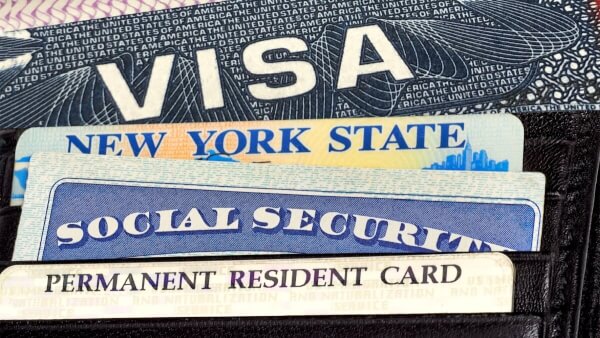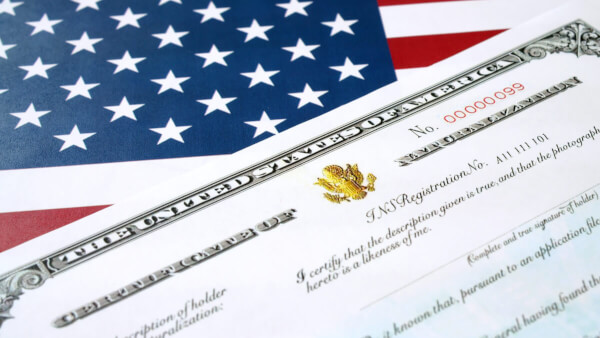Transferring your international driver's license to the US: step-by-step
Your full guide to updating your foreign driver's license to the US.

EB-1 Visas — also known as first preference employment based visas — are issued to a select group of people who want to live and work in the US. Once you have your EB-1 Visa, and have arrived in the country, you’ll often be able to apply quickly for an adjustment of status to permanent residence. This means you get your employment based Green Card.
Applying for an EB-1 Green Card is often quicker than via some other eligibility routes — but there are also strict criteria you’ll need to understand to get started. This guide walks through EB-1 Green Card eligibility, requirements and processing time.
| 📑 Table of Contents |
|---|
We’ll also touch on Wise and the Wise Multi-currency Account as smart, low cost ways to pay your Green Card application fees from abroad.
EB-1 Visas are available for people who fall into the following categories¹:
If you are in the first group — people of extraordinary ability — you can self petition. This means you don’t need a job already lined up to get this visa. Other candidates will need to have a US based employer, but the process for the employer to petition for the candidate as an alien employee is abridged as no labor certification is needed.
Here’s what you’ll need to do to show you fit into these eligibility categories:
EB-1A Visas are the most difficult to get, as well as the most flexible as you can self-petition without a job offer. You’ll need to either fulfil 3 of 10 USCIS requirements, or show a one time achievement which justifies the visa offer. The examples given are winning a Pulitzer Prize, and Oscar or an Olympic medal.
If you don’t qualify under the one time achievement rule, the criteria set out to prove you’re of extraordinary ability include:
To apply for an EB1-B Visa you’ll need a job offer which qualifies as tenure or tenure track teaching, and 2 of the 6 criteria set out. These include:
EB-1C Visa candidates are managers and executives at a multinational company. You’ll need an active job offer for this visa type, and you’ll normally need to have worked outside of the US for at least 1 of the 3 preceding years.
|
|---|
Moving from an EB-1 Visa to a Green Card is an adjustment of status. That’s done from within the US only, as it involves switching your status from being on a work related visa to being on a work based Green Card.
If you’re not in the US yet, but are eligible for an EB-1 Visa, you’ll need to apply for that via your local US consulate or embassy, and then apply for your Green Card once you have arrived in the US.
The length of time it takes to get your EB-1 Green Card varies depending on your situation.
The first step in the process is to have your employer petition — or self petition — for entry to the US as an alien worker. Technically, once this form has been approved, workers have to wait their turn in line until a visa becomes available. This process is run through the Visa Bulletin — a system to help people waiting for Green Cards understand the likely backlog before their paperwork is processed⁵.
The good news is that, at the time of writing, the Visa bulletin lists no wait times for EB-1 workers⁶. That means you’ll be able to go right ahead and apply for your Green Card at the same time your employer’s I-140 petition is being assessed.
Processing times for the I-140 form depend on whether you select regular or premium processing⁷. Premium processing takes 15 days, and is available to EB1 and EB2 category applicants. If you don’t fall into these categories, you can check the progress of your application by entering your case number into the USCIS tracking tool, oline.
There are several fees involved when you apply for an employment based Green Card.
For the EB1 Green Card, you’ll have to consider a couple of filing fees:
Assuming you’re applying with an employer sponsor, it’s worth negotiating about who pays these and other related fees. There’s no legal requirement for either employer or employee to cover the costs — so it’s a matter of agreeing the best possible deal with your workplace before you start.
Don’t forget that in addition there could be extra costs such as applying for dependent Green Cards, or getting documents translated or notarized as part of your evidence pack. If you’re not in the US yet, you’ll also need to pay for your travel and shipping of your personal effects.
| You can read a full guide to the costs of work based Green Card applications here |
|---|
Whenever you need to send money abroad, you need Wise. With Wise international payments and the Wise Multi-currency Account you can send, receive and hold 50+ currencies, and benefit from the real mid-market exchange rate every time you make a currency conversion.
|
|---|
Getting your US Green Card is an exciting time. Follow the steps in this guide, and access advice and resources available online to help make sure everything goes smoothly. And don’t forget that Wise and the Wise Multi-currency Account are there to help when you need to send, spend or hold a balance across different currencies.
Sources:
Sources checked on 04.08.2021
*Please see terms of use and product availability for your region or visit Wise fees and pricing for the most up to date pricing and fee information.
This publication is provided for general information purposes and does not constitute legal, tax or other professional advice from Wise Payments Limited or its subsidiaries and its affiliates, and it is not intended as a substitute for obtaining advice from a financial advisor or any other professional.
We make no representations, warranties or guarantees, whether expressed or implied, that the content in the publication is accurate, complete or up to date.

Your full guide to updating your foreign driver's license to the US.

Whatever your reason is for moving to the US, this guide aims to help you figure out the most important costs you'll face when you live there.

Find all you need to know about getting a personal loan for H-1B visa holders in this guide.

Everything you need to know about the US certificate of naturalization.

The US welcomes large numbers of new arrivals every year — and getting a great job to both gain experience and set down roots is a core part of the American...

Find everything you need to know about the US citizenship test, including the USCIS questions and answers.